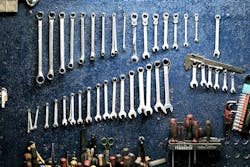It’s a Mystery Revealed
Many challenges are faced by those who choose to run a business with the sole purpose of providing an added-value alternative to the complicated and expensive task of maintaining our ability to work and play when and where we desire. With our freedom and mobility powerfully linked to the automobile, service and maintenance has turned into an opportunity for those up to the challenge. In the end, we who accept the challenge are confronted by the fact that those we seek to help rarely understand the why or how when it comes time to make added-value service decisions about their vehicles.
My belief is what operators have to do is communicate the value of their expertise while at the same time removing the mystery and expense that seems to surround every visit to a service department. Given the mystery that is at the heart of the dealership experience, lube shop operators who are at the top of their game find their own ways into and through the mystery and share with their customers the wisdom and personal experiences that make them the perfect guide for the value they seek.
The best marker of success is when the operator empowers customers to make educated decisions about their vehicle maintenance on their own. This extends to the type of service, frequency of service and selection of service fluids.
Sounds easy, but often you find the answer is much more complex than it appears on the surface. You have to ask the right questions and decide what the customer is trying to achieve. What are their goals? Only then, can you step back and figure out the service opportunity. If the operator only concentrates on one aspect of the service experience, have they forgotten everything else? I would call it “operator tunnel vision” when they maximize one service and fail to profile the vehicle duty cycle. The operator must judge everything in the total context. Are the OEM service guidelines valid? Does the vehicle usage pattern make the OE service goals achievable? Does factoring in the experience and knowledge of the operator allow changing the service guidelines to make sure the goals, expectations and costs meet the needs of the customer?
In the end, the operator has to communicate all of this and more to customers in a way they understand and appreciate.
Perhaps, the best marker of success is when the operator empowers customers to make educated decisions about their vehicle maintenance on their own. This extends to the type of service, frequency of service and selection of service fluids. In the end, you have to remember what each of us values as important may differ from what another considers to be important.
There are times when two products, one at each extreme of the price spread, can deliver the same value, depending on the needs and requirements of the vehicle owner. When this occurs, it is the task of the operator to find the words to convey the relative worth of such very different products without ignoring the fact that worth ultimately resides in the mind of the customer.
In the end, it’s the operator who has to communicate all of the necessary information to the vehicle owner. If we give customers a sense of what we value in products and what determines service intervals based on their use, they become familiar with our expertise and technical overview. They may be able to find in our wisdom and experience, something that inspires confidence, generates loyalty and evolves into long term relationships based on value and positive outcomes.
With competition for new vehicle sales cutting into profits, OEMs are growing their service departments as a vital source of new income. With dealership labor charges upward of $125 an hour, many customers are driven to seek less expensive service solutions. The opportunities for lube shop operators who have learned how to remove the mystery and convey the value of what they offer, will continue to grow as we keep our automobiles running as long as possible.
